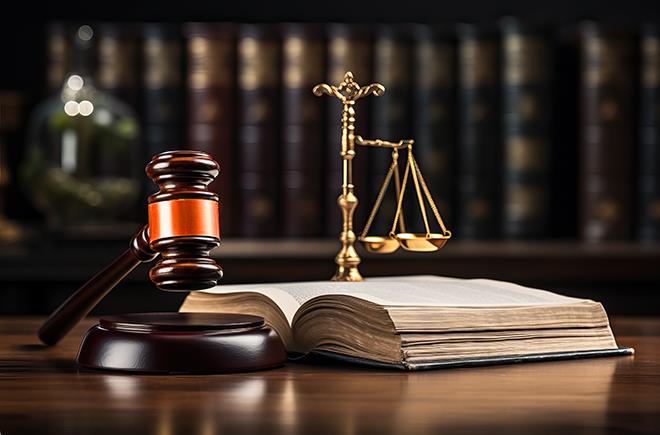Authenticating Disputed E-Signatures at Trial: ESIGN and UETA, Experts, Burdens of Proof, Audit Trails
Obtaining and Presenting the Unique Evidence Needed to Prove an Electronic Signature

Course Details
- smart_display Format
Live Online with Live Q&A
- signal_cellular_alt Difficulty Level
Intermediate
- work Practice Area
Class Action and Other Litigation
- event Date
Tuesday, June 24, 2025
- schedule Time
1:00 p.m. ET./10:00 a.m. PT
- timer Program Length
90 minutes
-
This 90-minute webinar is eligible in most states for 1.5 CLE credits.
This CLE webinar will discuss what evidence is required to authenticate a disputed electronic signature in federal court or in arbitration where the rules of evidence do not apply. The panel will review realistic ways authenticity challenges arise, review governing law, and suggest how to lay the proper foundation for getting the necessary testimony admitted.
Faculty

Mr. Alokush is a seasoned technology expert with extensive experience in tech forensics, litigation support, and serving as an expert witness. He provides comprehensive forensic analysis, uncovering critical digital evidence, and offers expert testimony in complex legal cases. Specializing in the intricacies of data recovery, cybersecurity, and digital evidence, Mr. Alokush has worked with legal teams and private clients to ensure the integrity and reliability of critical information in high-stakes litigation. He continues to be a trusted advisor in the intersection of law and technology. Mr. Alokush is also an active industry speaker and author on artificial intelligence, fintech, and other emerging issues.
Description
The federal Electronic Signatures in Global and National Commerce Act (ESIGN) and the Uniform Electronic Transactions Act (UETA), adopted in substantially the same form by every state except New York, which has the Electronic Signatures and Records Act, provide that "electronic" or remote signatures are as equally as valid and enforceable as traditional "wet" signatures, with certain enumerated exceptions in each statute.
But what happens when the authenticity of the e-signature is disputed, as may happen in breach of contract, employment, class action, and arbitration clauses? E-signatures can be stolen, forged, or modified in system security breaches by hackers, malware, or other similar mechanisms. Moreover, the actual reliability of software is not as high as everyone likes to believe.
None of these statutes, however, speak to whether the electronic signature is authentic, nor do they alter the burden of proof for establishing that a signature is what it purports to be if the signatory denies it. The type of evidence needed to authenticate an electronic signature requires careful thought and unique evidence.
With electronic signatures on electronic documents, nothing is tangible and there are no witnesses. As one commentator has observed, someone simply engages software on a machine and relies on it to know what has been signed and when. Electronic signature systems store personally identifying information, which can be stolen or breached, and must comply with data privacy laws. An electronic signature can be removed without notice.
Listen as our panel of experts discusses how to actually prove an electronic signature is what it purports to be.
Outline
- UETA and ESIGN requirements
- What is sufficient to create an issue as to the validity of an e-signature?
- Burden of proof
- Choice of law
- Proving identity
- Document immutability
- Audit trails
- Circumstantial evidence
- FRE 901 and self-authentication
- Hearsay
- Role of experts
- Cases where authentication failed
- Cases where authentication succeeded
Benefits
The panel will review these and other key issues:
- How can the assumption that software and computer systems are reliable be overcome?
- Does an individual's inability to recall signing electronically create an issue as to authenticity?
- Can judicial notice be called upon to prove authenticity?
Unlimited access to premium CLE courses:
- Annual access
- Available live and on-demand
- Best for attorneys and legal professionals
Unlimited access to premium CPE courses.:
- Annual access
- Available live and on-demand
- Best for CPAs and tax professionals
Unlimited access to premium CLE, CPE, Professional Skills and Practice-Ready courses.:
- Annual access
- Available live and on-demand
- Best for legal, accounting, and tax professionals
Related Courses

Authenticating Disputed E-Signatures at Trial: ESIGN and UETA, Experts, Burdens of Proof, Audit Trails
Friday, February 28, 2025
1:00 p.m. ET./10:00 a.m. PT

Concurrently and Ethically Representing Companies, Owners, and Employees in the Same Matter
Monday, May 19, 2025
1:00 p.m. ET./10:00 a.m. PT
Recommended Resources
Explore the Advantages of Consistent Legal Language
- Learning & Development
- Business & Professional Skills
- Talent Development